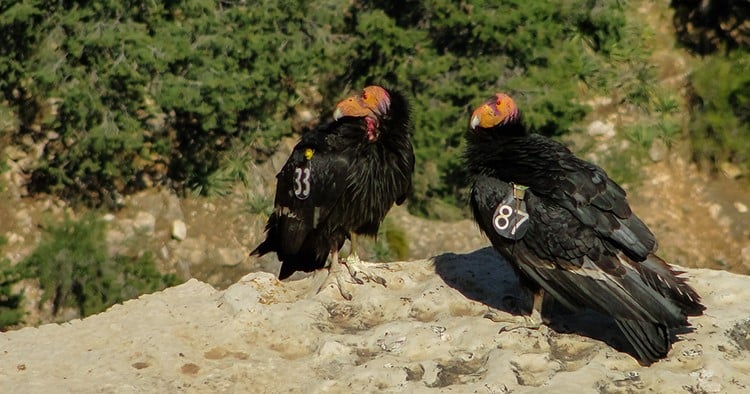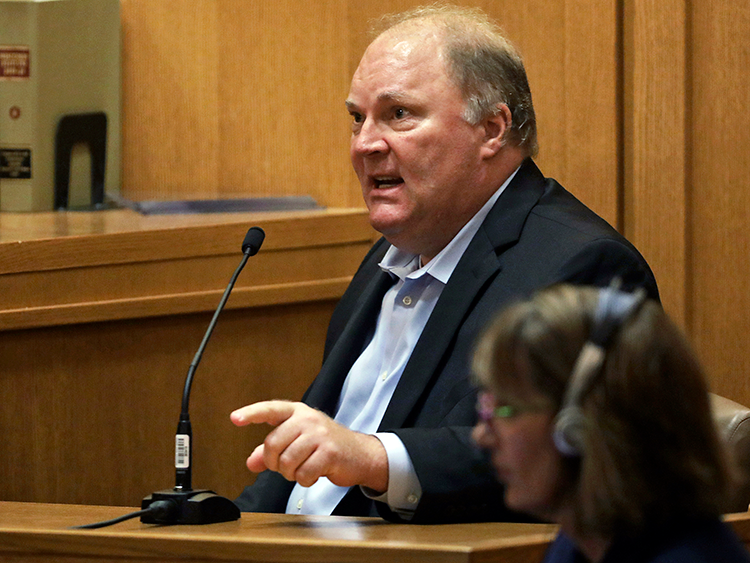Proposed regulatory changes imperil protections in Endangered Species Act, environmentalists say

A mating pair of critically endangered California condors with radio transmitters sits on a rock ledge in Grand Canyon National Park, Arizona. Eric Dale / Shutterstock.com
The Trump administration says proposed changes in regulations implementing the Endangered Species Act would reduce the regulatory burden on the American people while producing the best conservation results for the species.
Business groups and representatives of Western states have long supported changes to curtail the Endangered Species Act. They have contended the law has produced lawsuits and controlled the use of land, according to the New York Times.
But environmentalists complain that the changes unveiled Thursday will weaken protections for endangered animals and plants. The Center for Biological Diversity calls the proposals a rollback that aims a “wrecking ball” at the law.
The New York Times covered the proposals, along with Washington Post, Bloomberg News and E&E News.
One proposal would rescind a blanket rule adopted by the U.S. Fish and Wildlife Service that automatically gave the same protection to threatened species as endangered species. Threatened species are one level below that of endangered species, the most serious category.
The change would create species-specific rules with tailored protections, according to a government press release. Environmentalists say the rule could mean threatened species won’t have sufficient protections until their numbers dwindle to a point where it is difficult to prevent extinction.
The government also seeks to narrow the definition of threatened species. Currently the law says a threatened species is one “likely to become an endangered species within the foreseeable future throughout all or a significant portion of its range.” The new proposal would define “foreseeable future” to make it clear that the time period extends only as far as the government can reasonably determine that future threats are probable. The government “will avoid speculating as to what is hypothetically possible,” according to a summary of the proposals.
Environmentalists say the narrow definition of foreseeable future could mean that species threatened in future years by climate change won’t be protected.
A third change would remove a phrase that says the government should decide which species are protected “without reference to possible economic or other impacts.” The government says the change more closely aligns with statutory language that says determinations should be made based “solely on the basis of the basis of the best scientific and commercial data available.”
The government will continue to make determinations based solely on biological considerations, but “there may be circumstances where referencing economic, or other impacts may be informative to the public,” according to the proposal summary.
Another key change would shrink areas designated as critical habitats, according to E&E News. Currently some areas are considered a habitat important for recovery even if they are not occupied by a threatened species. The change would designate unoccupied areas as critical habitats only if the inhabited area is insufficient.
In some rare cases, there may be no designation of a critical habitat under a widened list of circumstances when such a designation would not be prudent.



